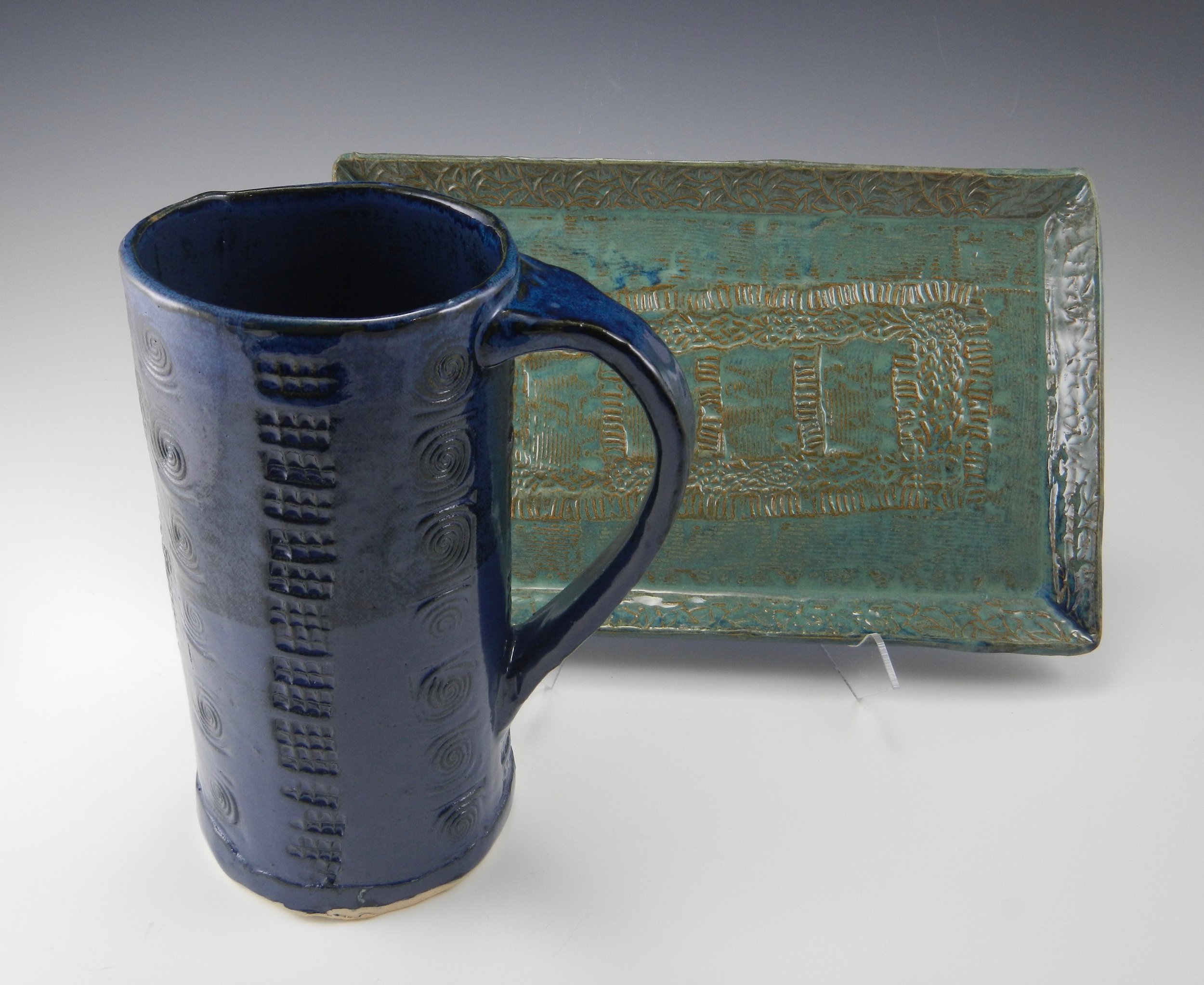Date night" is an event happening every few weeks lately in my studio. "Date Nighters" are happily spending their two hours being creative with clay. It gets busiest when Saturday evenings are long and the weather outside is not so great. But even when the days are longer, as they will be in just a few days, Sunday or weeknight evenings are possible.
(Serving pieces in Nutmeg glaze)
I have learned over the last few years that when I explain the options, and demonstrate the techniques for making projects, the "daters" still need to take a little time to understand what I'm preparing them to do. After all, I don't have readymade "paint your own". We work with fresh clay and make our own pieces.
So I've taken just lately to creating some infrastructure in advance to help them get the concept quickly. I've been designing and cutting out tarpaper templates (black roofing paper, which stands up to dampness). And I've been throwing mold forms ("hump molds") and bisque-firing them. The "date nighters" can still have the fun of rolling fresh clay into slabs using my slab roller, then cutting the flattened clay to shape using the templates I made, and either draping the cut-out clay over or wrapping it around these bisqued hump forms. They will be (ta da!) creating a 3-D object this way. The creative fun continues as they stamp, texture, and add sculptural bits.
People can choose between these projects in advance, so I will know what to set up before they arrive. The template and hump mold items I made this week are a salad bowl and a small pair of candlesticks, both of them objects that people have asked me if they could make, and which were deceptively tricky to do. There are other templates and forms too.
In case it seems I am babying my customers, I should explain: People who have never or rarely ever touched clay need to quickly gain some understanding of a few important things just so they can start. How thin can the clay be rolled and how long can it be worked in the raw state before it begins to crack or crumble? How deeply can one cut into the clay with a knife or needle tool before it has been given an excuse to crack in the drying? When does one need to take into account shrinkage (which happens while drying, and later while being fired in the kiln)? To help them just get on with in, in their two short hours of Date Night at the Pottery, I'm now smoothing the way.
(Very large coffee, for an all-day buzz, and a stamped serving platter)
(Lace-impressed serving piece)
(Leaf dishes, and square plate made over a drape-mold)
(Lace, stamps, and various great textures on dining and serving pieces)
After the pieces are made, I do the kiln firings and glazing work to their specifications, based on the glazes I have in stock (which I make myself from tried and true glaze recipes).
This is a lot of fun. To those who are curious, I say, Save a date now (for after April 9th, 'cause I'm booked till then) and try it! The pertinent details are in Pottery Classes & Date Nights.





